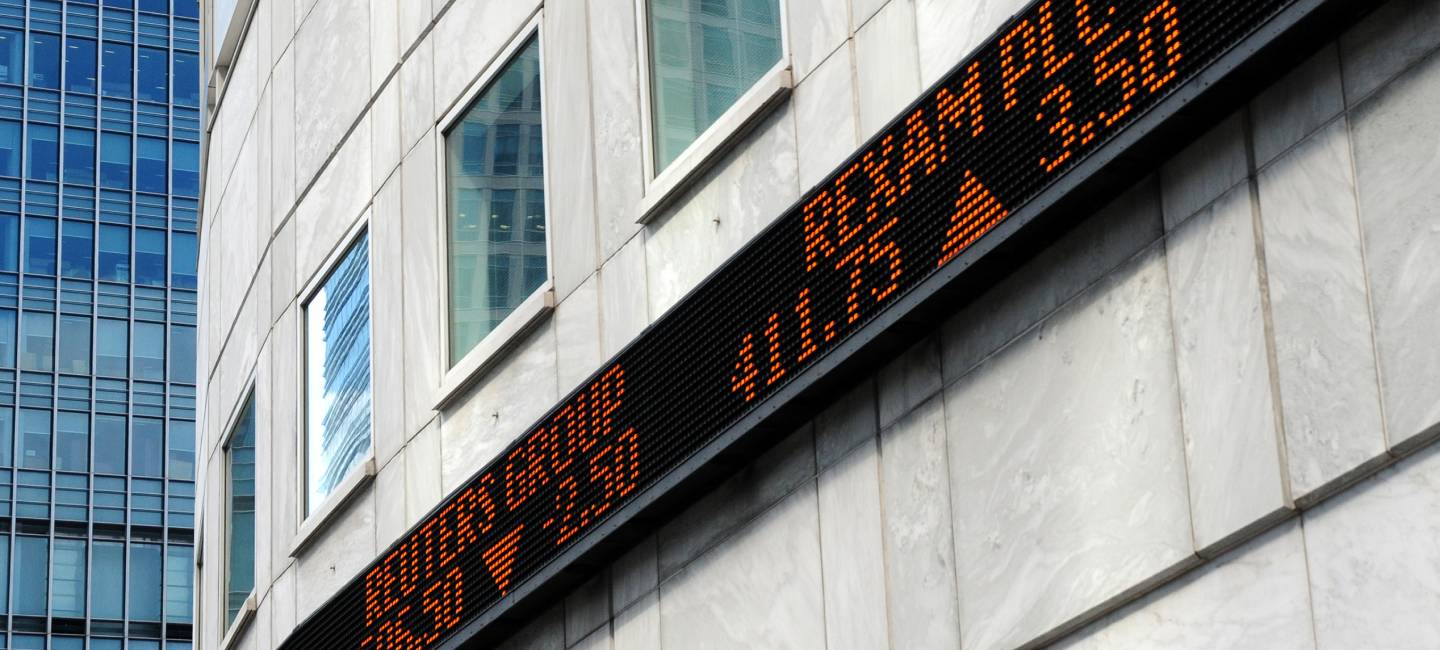

This article is for general guidance only and is not financial or professional advice. Any links are for your own information, and do not constitute any form of recommendation by Saga. You should not solely rely on this information to make any decisions, and consider seeking independent professional advice. All figures and information in this article are correct at the time of publishing, but laws, entitlements, tax treatments and allowances may change in the future.
If you rent out property, or you’re self-employed, you could be affected by the introduction of Making Tax Digital.
It’s the biggest change in tax returns since self-assessment was launched over 30 years ago. It will be compulsory for many landlords and sole traders to keep digital records and submit tax records to HMRC five times a year.
And you’ll need to use new accounting software to manage your tax affairs.
What’s on this page?
Making Tax Digital for Income Tax applies across the whole of the UK, whether you’re in England, Scotland, Wales or Northern Ireland.
If your qualifying income from self-employment and/or property was above £50,000 for the 2024/25 tax year, you’ll need to sign up and submit quarterly updates from 6 April 2026.
After April 2026 the earnings threshold will be lowered.
These lower thresholds will sweep in many more people who let property or work part-time on a self-employed basis.
The threshold levels refer to gross income or turnover, not profit. If you are self-employed and have property income, you should count the total for both. It does not include income from PAYE employment, dividends (including those from your own company), pension, investments or partnership income (in most cases).
If you own a rental property with someone else, then your share of the property income is the relevant amount.
If you’ve only just started renting out property or working for yourself, you don’t have to use Making Tax Digital until after you’ve submitted at least one self-assessment tax return.
MTD doesn’t apply to limited companies, as a limited company does not file a self-assessment tax return.
However, company directors who earn over the threshold through rental income or other self-employment in their own name may be subject to MTD personally. However, your salary or dividend payments from your company will not be included in the qualifying income calculation.
The government claims MTD will “modernise the tax system” and will make your tax admin easier, because the software can tally up invoices for you.
You’ll be able to see up-to-date cash flow and see your predicted tax bill all year round. But experts warn it will cost taxpayers time and money.
Paul Guise, director at Prime Accountants Group, says if someone isn’t used to using digital software for this or isn’t IT literate, the technology may be daunting.
“People are naturally resistant to change, and there’s the transition process of getting onto the software, learning how to use it and understanding what needs to be done.”
To comply with Making Tax Digital, you will need to use HMRC-approved compatible accounting software and then sign up for Making Tax Digital with HMRC.
Andy Vessey, head of tax and Kingsbridge, says HMRC will not register taxpayers for MTD automatically. If your income exceeds the threshold, you’ll need to sign up for MTD in a similar way to registering for self-assessment currently.
“HMRC has already been writing to taxpayers where the amount of qualifying income on their 2024 self-assessment tax return indicates they need to comply with MTD, assuming that income remains constant or greater in 2024/25. More definitive communications will follow after 31 January 2026, once 2025 tax returns have been filed.”
In your first year using the new service, you’ll still need to fill out a self-assessment tax return for the previous tax year in the usual way, because you won’t have sent quarterly updates for the previous tax year.
You can sign up now if you want to start using it early. HMRC says that those who sign up early will have access to extra help and support.

There is a software finder tool to help you find suitable software. Exactly what software you can use will depend on what other income you have (like pensions or employment) and your outgoings (such as pension contributions, charity donations or voluntary class 2 national insurance contributions).
You can use:
Packages are currently available from Sage, Iris, Coconut, 123 Sheets, FreeAgent, Xero and other software firms. Most of the options come at a cost, although some have a free initial period.
Karen Anderson, director in the private client tax team at PKF Littlejohn, says not all software products being worked on are available yet, as companies are waiting on further details from HMRC on what will be required. “This can make it hard to weigh up currently what might be the best software to use.”
Some taxpayers searching for software are – rather confusingly – being advised to combine different types of software to meet their tax obligations.
An HMRC spokesperson told Saga: “A variety of free and low-cost software is already available to support the introduction of MTD in April 2026, but we recognise we have further to go and are continuing to work with software developers to deliver further functions for taxpayers’ needs between now and then.”
Making Tax Digital doesn’t change the dates you need to pay your tax. Payments will still be due twice a year, by 31 January and 31 July.
What will change is how you report your income and expenses to HMRC. You’ll need to send quarterly updates every three months.
The deadline for each update is the 7th of the month after the quarter ends. For example, the deadline for Q1 (6 April to 5 July) will be 7 July.
If you earn money from both property and self-employment, you’ll need to keep separate records and send two quarterly updates – one for each.
You’ll also need to file a ‘final declaration’ by 31 January after the tax year ends (i.e. 31 January 2028 for the 2026/27 tax year) to pull everything together.
This will be similar to a self-assessment return. It will already include the data from your quarterly updates, and you’ll need to make any adjustments such as for capital expenses that reduce profits or to claim any relief.
The final declaration will also be used to tell HMRC about other sources of income such as pension payments, savings interest, capital gains and dividends.
HMRC estimates that set-up costs for Making Tax Digital will cost an average of £320. This includes purchasing the software and any training you may need to get to grips with it. The average annual additional cost will then be £110 for the software subscription.
You may find it easier to use an accountant to do this for you, although this will obviously come at a cost.
According to 6 Figure Bookkeeper, which surveyed bookkeepers about their Making Tax Digital pricing plans, the most common fee range (cited by 28% of respondents) is between £251 and £500 a year for MTD services – but 7% plan to charge between £501 and £1,000.
You can apply to HMRC for an exemption from Making Tax Digital if it would be “unreasonable or impractical” for you to follow the digital rules. This might be due to your age, disability, location or another reason. HMRC calls this being “digitally excluded”.
You can also apply for an exclusion if you’re a practising member of a religious society or order whose beliefs are incompatible with using electronic communications or keeping electronic records.
To be excluded, you need to write to HMRC explaining why you believe you’re eligible. If HMRC doesn’t agree, you’ll need to comply or risk penalties.
If you need to take part in Making Tax Digital and you don’t keep the records you are supposed to, using compatible software, you can be fined up to £3,000 for each quarter.
From April 2026, HMRC is bringing in a new points-based penalty system to issue fines. Each time you miss a quarterly update or final declaration, you are given one point.
When you hit four points, you’ll be fined £200. Late payment of tax is penalised separately. Nothing is charged for the first 15 days.
After that, 3% of the amount owed is added at day 16, then another 3% at day 30. From day 31, there’s a further 10%-per-year on any amounts outstanding, plus interest.
Stuart Miller, director of public policy at Xero, says there’s still a lot of work to do to raise awareness of Making Tax Digital, and it’s unlikely that everyone will be ready for the deadline.
“Our recent research found 26% of sole traders and landlords have not heard of the regulation and as the mandation date creeps closer, it’s likely that a wave of self-employed professionals and landlords will need to seek advice from accountants and bookkeepers on what the changes mean and the steps they need to take,” he says.


With our Stocks & Shares ISA and General Investment Accounts. Capital at risk.

Discover the top dividend-paying stocks and the secrets to sustainable returns.

These tax-free income tips and allowances can boost your retirement income.


Follow our tips to help you avoid fines and avoid paying more tax than you should.
